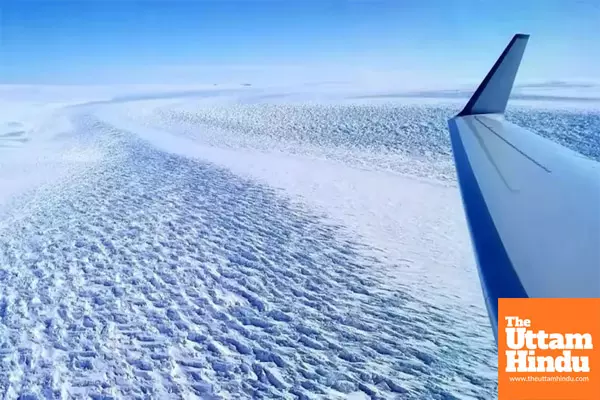
Decline in Ocean Crust Production May Have Caused Significant Sea Level Drop, Study Suggests

A major decline in ocean crust production between 15 million and 6 million years ago could have triggered a sea level drop of 26–32 metres, a change comparable to the rise expected from the melting of the East Antarctic Ice Sheet today. The study suggests that geological processes, particularly those altering ocean basin volume, played a crucial role in this shift, with a slowdown in seafloor spreading deepening ocean basins and affecting global sea levels over millions of years.
Tectonic Activity and Ocean Basin Deepening
Published in Geochemistry, Geophysics, Geosystems, the study shows that ocean crust production declined by 35 percent during this period, primarily due to reduced seafloor spreading. This decrease in crust production led to deeper ocean basins, which, according to the research, resulted in a sea level drop of 26–32 metres. The researchers considered various initial conditions for crust formation and destruction to ensure the accuracy of their sea level estimates.
Impact on Oceanic Heat Flow and Chemistry
The slowdown in ocean crust production also led to an 8 percent decrease in heat transfer from the Earth's mantle to the ocean, with a more significant 35 percent reduction in hydrothermal flux near oceanic ridges. These changes likely influenced ocean chemistry, potentially impacting marine ecosystems. The study’s findings align with existing geological data from coastal rock formations in New Jersey and Nova Scotia, further supporting the estimated sea level drop.
Possible Links to Climate Cooling
Previous research suggests that the reduction in ocean crust production could have also led to a decrease in volcanic emissions of greenhouse gases, contributing to global cooling. The study indicates that if these emissions were indeed reduced, additional factors such as the thermal contraction of seawater and the expansion of ice sheets could have caused an even greater sea level drop of over 60 metres.
These findings highlight the complex relationship between tectonic activity, ocean chemistry, and global sea levels, offering a new perspective on how geological processes may have influenced climate changes in Earth's distant past.

